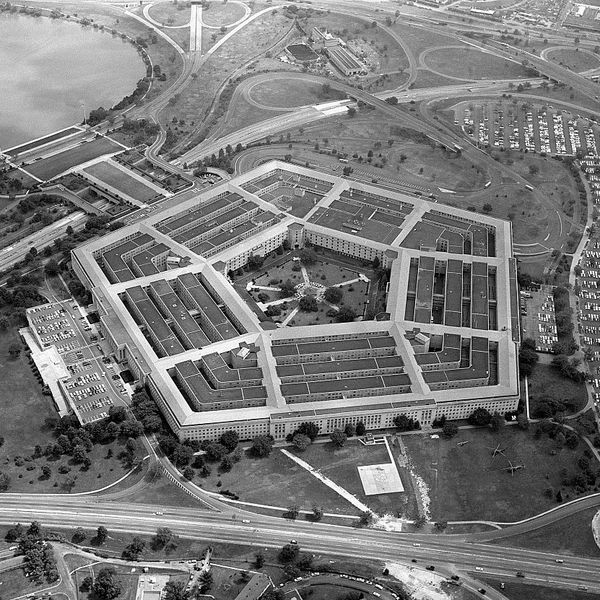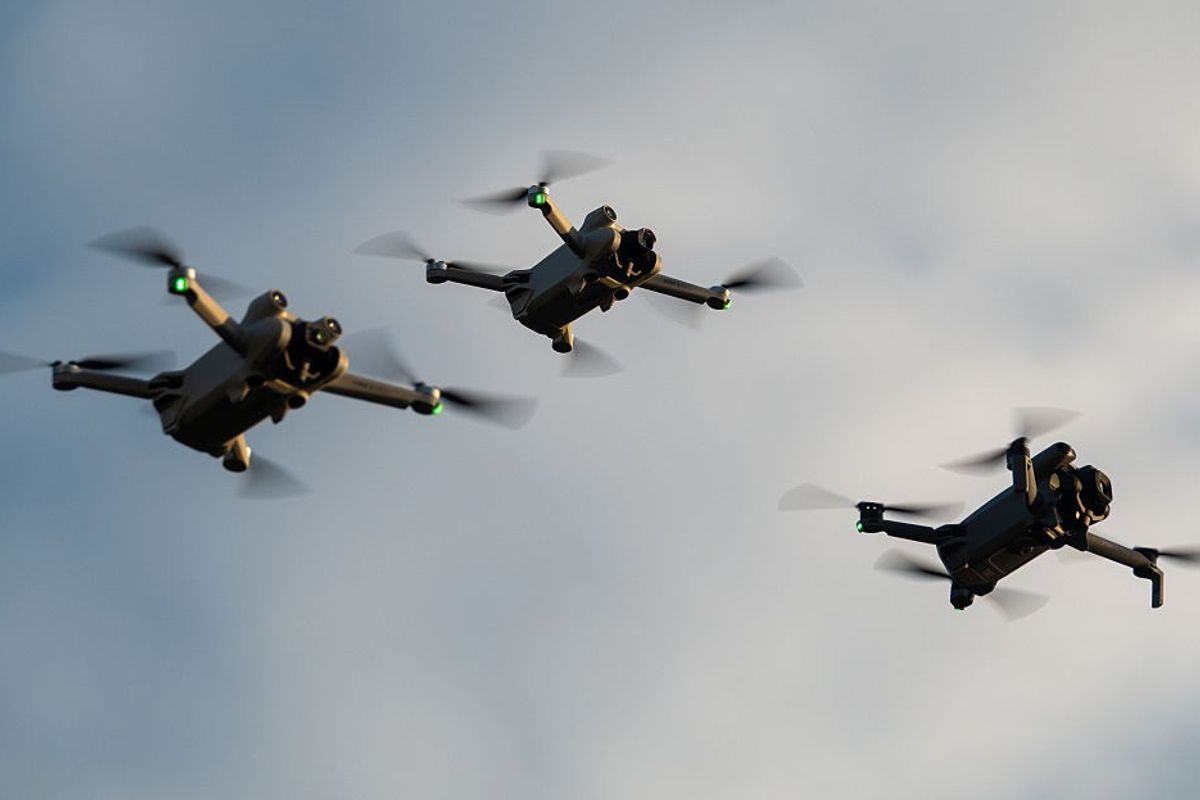OPINION — For most of modern history, asymmetric conflict conjured a familiar image: guerrillas in the hills, insurgents planting roadside bombs, or terrorists striking with crude weapons. The weak have traditionally offset the strong with mobility, surprise, and a willingness to take punishment.
That world is vanishing. A new age of synthetic asymmetry is emerging, one defined not by geography or ingenuity but by the convergence of technologies that enable small actors to wreak large-scale disruption. Unlike past asymmetry, which grew organically out of circumstance, this new form is engineered. It is synthetic, built from code, data, algorithms, satellites, and biotech labs. Here, “synthetic” carries a double meaning: it is both man-made and the product of synthesis, where disparate technologies combine to produce effects greater than the sum of their parts.
The implications for global security are profound. Power isn’t just about the size of an army or the depth of a treasury. It’s increasingly about who can combine technologies faster and more effectively.
A Brief History of Asymmetry
The weak finding ways to resist the strong is as old as conflict itself, but each era has defined asymmetry differently – shaped by the tools available and the political conditions of the time.
Nineteenth and 20th century resistance fighters, from Spain’s guerrilleros against Napoleon to Mao’s partisans in China, pioneered strategies that leveraged terrain, mobility, and popular support to frustrate superior armies. These methods set the template for Vietnam, where North Vietnamese and Viet Cong forces offset American firepower by blending into the population and stretching the war into a contest of political will.
The late 20th century brought new asymmetric forms. In Afghanistan, the mujahideen used Stinger missiles to neutralize Soviet air power. In Iraq, improvised explosive devices (IEDs) became the great equalizer, allowing insurgents to impose costs on heavily armored U.S. forces. Al-Qaeda and later ISIS demonstrated how transnational terrorist networks could project power globally with minimal resources, using ideology and spectacular violence to substitute for armies.
By the early 2000s, the cyber domain opened an entirely new front. The 2007 attacks on Estonia, widely attributed to Russian actors, showed that digital disruption could cripple a modern state without conventional force. Just three years later, the Stuxnet worm revealed how code could achieve effects once reserved for kinetic strikes, sabotaging Iranian nuclear centrifuges. These incidents marked the beginning of cyber as a core tool of asymmetric power.
The Arab Spring of 2011 revealed another evolution. Social media allowed activists to outmaneuver state censorship, coordinate mass mobilizations, and project their struggles globally. Authoritarian regimes learned just as quickly, harnessing the same tools for surveillance, propaganda, and repression. Asymmetric power was no longer only about insurgents with rifles; it could be exercised through smartphones and hashtags.
What began as the playbook of the weak has now been eagerly adapted by the strong. Russia weaponized social media to influence elections and deployed “little green men” in Crimea, deniable forces designed to blur the line between war and peace. Its use of mercenary groups like Wagner added a layer of plausible deniability, allowing Moscow to project power in Africa and the Middle East without formal commitments. China has fused state and private industry to pursue “civil-military fusion” in cyberspace, using intellectual property theft and digital influence campaigns to achieve strategic goals without firing a shot. Even the United States, though historically the target of asymmetric tactics, has employed them, using cyber operations like Stuxnet and financial sanctions as tools of coercion.
This adaptation by great powers underscores the shift: asymmetry is no longer just the recourse of the weak. It has become a strategic option for all actors, strong and weak alike. These episodes trace an arc: from guerrilla tactics shaped by terrain to a world where asymmetry is engineered by design.
The Cipher Brief brings expert-level context to national and global security stories. It’s never been more important to understand what’s happening in the world. Upgrade your access to exclusive content by becoming a subscriber.
Convergence as a Weapon
Synthetic asymmetry is not the product of a single breakthrough. It’s a result of technologies intertwining, with emergent results exceeding the sum of the parts.
● Artificial intelligence and autonomy turn cheap drones into swarming strike platforms and enable generative AI-fueled propaganda that is instantly localized, highly scalable, and adapts in real time.
● Biotechnology, leveraged by the democratization of tools like CRISPR and gene synthesis, opens doors to agricultural sabotage, engineered pathogens, or personalized biotargeting once confined to elite labs.
● Cyber and quantum computing erode modern infrastructure–today through leaked state tools in criminal hands, tomorrow through quantum’s threat to encryption.
● Commercial space assets put reconnaissance and global communications in reach of militias and small states.
● Cryptocurrencies and decentralized finance fund rogue actors and blunt the power of sanctions.
● Undersea infrastructure opens a highly asymmetric chokepoint, where low-cost submersibles or sabotage can sever global fiber-optic cables and energy pipelines, inflicting massive economic damage.
This is less about any one killer app than about convergence itself becoming a weapon.
Asymmetric warfare has always been about imbalance, but the shift to synthetic asymmetry is an exponential leap. A single phishing email can cripple a city’s infrastructure. Off-the-shelf drones can threaten billion-dollar ships. AI-powered disinformation efforts can destabilize national elections. This new ratio of effort to impact is more disproportionate than anything we’ve seen before.
Sign up for the Cyber Initiatives Group Sunday newsletter, delivering expert-level insights on the cyber and tech stories of the day – directly to your inbox. Sign up for the CIG newsletter today.
Where Synthetic Asymmetry Is Already Here
Ukraine's defense shows what convergence looks like in practice. Commercial drones retrofitted for combat, AI-assisted targeting, crypto-based crowdfunding, and open-source satellite intelligence have allowed a middle-sized country to hold its own against one of the world’s largest militaries. The drone is to the 21st century what the AK-47 was to the 20th: cheap, accessible, and transformative.
In Gaza, reports suggest AI-driven targeting systems have accelerated lethal decision-making. Proponents say they improved efficiency; critics warn they lowered thresholds for force and reduced accountability. Either way, the software changed the calculus of war. When algorithms operate at machine speed, traditional political checks on violence weaken.
Iran has demonstrated how low-cost drone technology can harass U.S. naval forces and regional shipping. These platforms cost a fraction of the vessels and missile defenses required to counter them. Combined with cyber probes against Gulf energy infrastructure, Iran illustrates how synthetic asymmetry allows a mid-tier state to impose global strategic costs.
China’s campaigns against Taiwan go beyond military intimidation. They include AI-generated disinformation, synthetic social media accounts, and coordinated influence operations designed to erode trust in democratic institutions. This is synthetic asymmetry in the cognitive domain, an attempt to shift political outcomes before shots are ever fired.
In parts of Africa, mercenary groups operate with funding streams routed through cryptocurrency wallets, supported by commercial satellite communications. These mercenaries operate in gray zones, blurring the line between private enterprise and state proxy. Accountability vanishes in a haze of digital anonymity. Ransomware gangs, meanwhile, already display near-peer disruptive power. They freeze hospitals and pipelines, extract ransoms, and launder funds through crypto markets. Add generative AI for phishing and deepfake voices for fraud, and these groups begin to resemble stateless proto-powers in the digital realm.
The Private Sector as a Geopolitical Actor
Synthetic asymmetry also elevates the role of private companies. Commercial satellite firms provided Ukraine with near-real-time battlefield imagery. SpaceX’s Starlink network became essential to Kyiv’s communications, until its corporate leadership balked at enabling certain military uses. Crypto exchanges, meanwhile, have been both conduits for sanctions evasion and partners in enforcement.
These examples reveal a new reality: private entities now hold levers of power once reserved for states. But their interests are not always aligned with national strategies. A tech CEO may prioritize shareholder value or brand reputation over geopolitical objectives. This creates a new layer of vulnerability—governments dependent on private infrastructure must negotiate, persuade, or regulate their own corporate champions to ensure strategic alignment. The private sector is becoming a semi-independent actor in world politics.
Need a daily dose of reality on national and global security issues? Subscriber to The Cipher Brief’s Nightcap newsletter, delivering expert insights on today’s events – right to your inbox. Sign up for free today.
The Cognitive and Economic Fronts
Perhaps the most destabilizing form of synthetic asymmetry lies in the cognitive domain. Deepfakes that impersonate leaders, AI-generated news outlets, and precision microtargeting of narratives can shape perceptions at scale. The cost of attack is negligible; the cost of defense is nothing less than the integrity of public discourse. For democracies, the danger is acute because open debate is their lifeblood.
Synthetic asymmetry also reshapes geopolitics through finance. North Korea has bankrolled its weapons programs through crypto theft. Russian oligarchs have sheltered assets in opaque digital networks. Decentralized finance platforms move billions across borders beyond the reach of traditional oversight. This financial shadow world undermines sanctions, once a cornerstone of Western statecraft, and allows actors to sustain pressure that would once have been crippling.
Why Democracies are Both Vulnerable and Strong
Herein lies the paradox: democracies are more exposed to synthetic asymmetry precisely because of their openness. Their media, economies, and political systems are target-rich. Legal and ethical constraints also slow the adoption of equivalent offensive tools.
Yet democracies hold underappreciated strengths: decentralized command cultures that empower rapid adaptation, innovation ecosystems that thrive on openness and collaboration, and alliances that allow for collective defense. The task is to recognize culture itself as a strategic asset and to organize defense not around any single domain, but across all of them.
Ethical and Legal Frameworks in Flux
The rise of synthetic asymmetry is colliding with international law and norms written for an earlier era. The legal status of cyber operations remains contested: is a crippling ransomware attack on a hospital an act of war, or a crime? The Tallinn Manual, NATO’s best attempt at clarifying how international law applies in cyberspace, remains largely aspirational.
AI-driven weapons systems pose even sharper dilemmas. Who is accountable when an algorithm selects a target in error? Should lethal decision-making be delegated to machines at all? The pace of technological change is outstripping the slow processes of treaty-making, leaving a widening gap between capability and governance, a gap where much of the risk resides.
Beyond Cold War Deterrence
Traditional deterrence, threatening massive retaliation, works poorly in a world of synthetic asymmetry. Many attackers are diffuse, deniable, or stateless. They thrive in gray zones where attribution is murky and escalation is uncertain.
What’s required is not just more technology, but a new doctrine for resilience: one that integrates cyber, cognitive, biological, economic, and space defenses as a single system. That doctrine has not yet been written, but its absence is already being exploited. At ISRS, we see this convergence daily, working with governments and institutions to adapt strategies for engineered asymmetric disruption.
We are at a hinge moment in strategic affairs. Just as the machine gun upended 19th-century doctrine and nuclear weapons reordered 20th-century geopolitics, the convergence of today’s technologies is reshaping the distribution of power. The future won’t be decided by who fields the biggest army. It will be decided by who can synthesize technologies into a disruptive force faster. That is the coming age of synthetic asymmetry. The question is whether democracies will recognize it and prepare before it fully arrives.
The Cipher Brief is committed to publishing a range of perspectives on national security issues submitted by deeply experienced national security professionals.
Opinions expressed are those of the author and do not represent the views or opinions of The Cipher Brief.
Have a perspective to share based on your experience in the national security field? Send it to Editor@thecipherbrief.com for publication consideration.
Read more expert-driven national security insights, perspective and analysis in The Cipher Brief

















